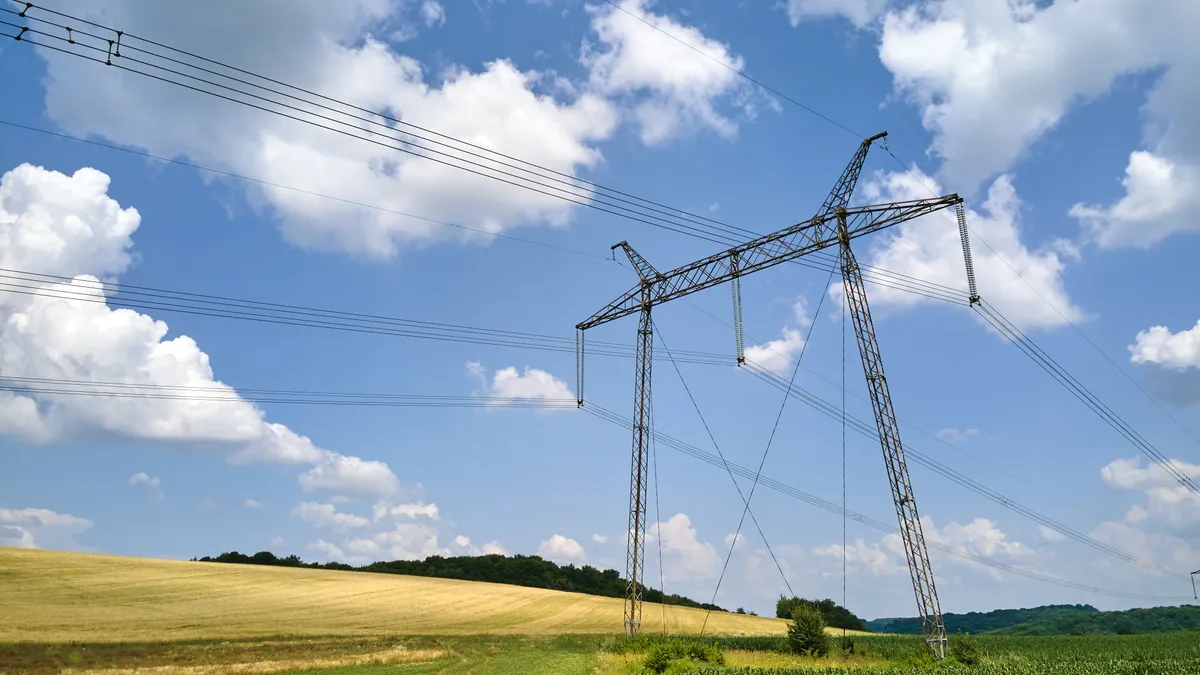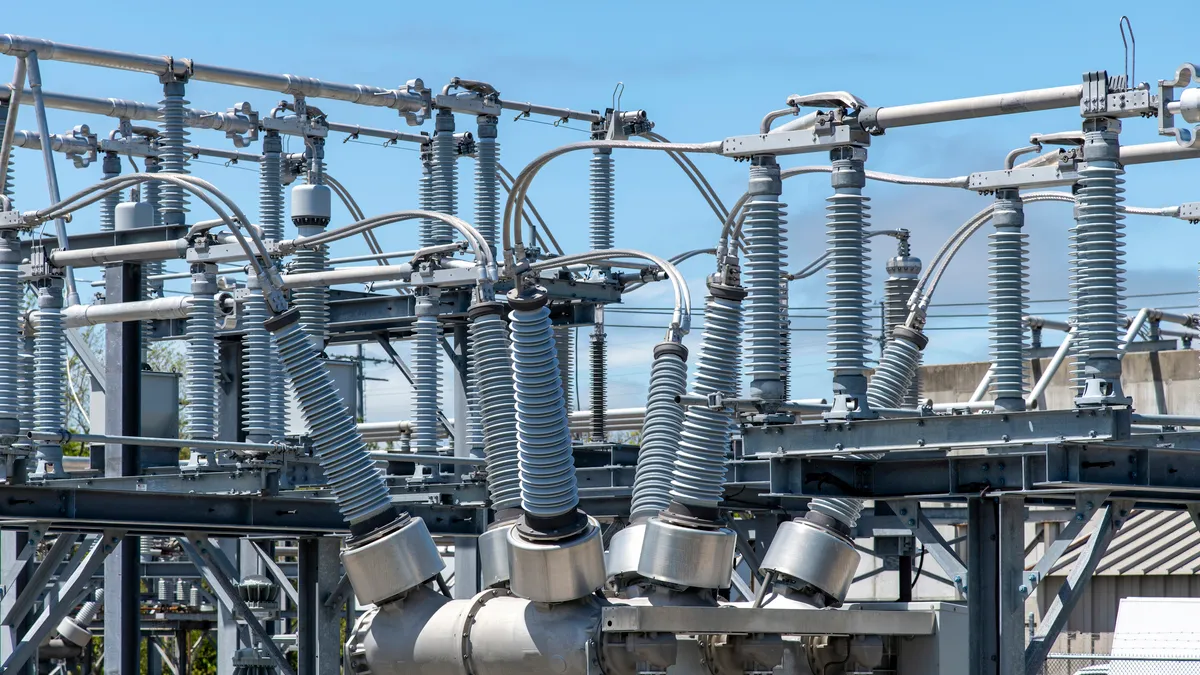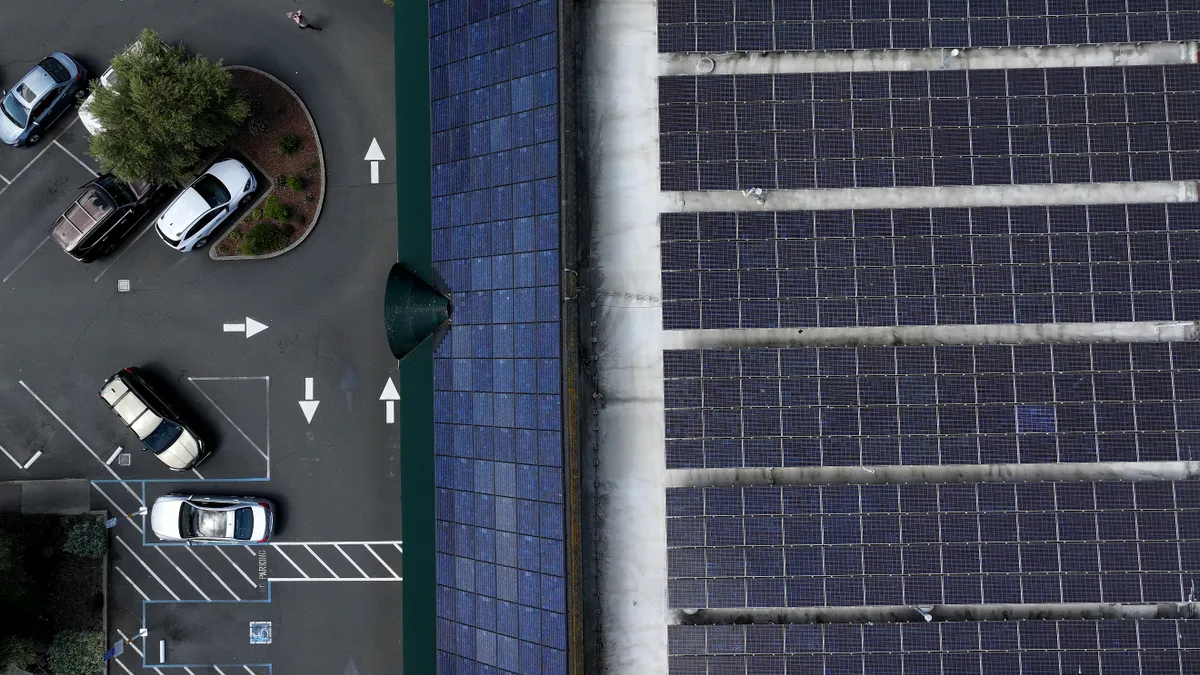The story behind Oregon’s just-passed 50% renewables mandate contains lessons for states across the country.
Senate Bill 1547, which also will move Oregon’s investor-owned utilities Pacific Power and Portland General Electric (PGE), completely off coal by 2035, was the result of a collaborative effort from the IOUs, the state consumer advocate, and a group of environmentalists and renewables advocates.
Once it is signed, that effort will have produced a law that represents "the single greatest step any state has taken on climate change in the wake of the historic Paris agreement in December,” according to Sierra Club Sr. Campaign Representative Amy Hojnowski.
This joint effort is an example of a recent trend in power sector policymaking in some states. Instead of battling over changes to the utility power mix in contentious regulatory proceedings, stakeholders work toward a win-win solution in outside meetings, presenting a united front to legislators and regulators alike.
An early example of the trend was when South Carolina’s solar advocates joined with Duke Energy and South Carolina Gas and Electric in 2014 to write landmark policy that is already growing the state’s solar capacity. A more recent instance is in Maine, where the consumer advocate and local solar installers are now working with utilities and state lawmakers to write an entirely new kind of solar support policy.
Those policymaking efforts stand in contrast states like North Carolina, where stakeholders have rejected working with Duke Energy and have made little progress on solar policy, and Nevada, where the clash between solar advocates and NV Energy has all but shut down the state's solar business.
Following expected approval from Gov. Kate Brown (D), the Oregon bill will set one of the most aggressive U.S. renewable portfolio standards (RPS) “matched only by California and New York, which have a 50% target by 2030, Vermont, which has a 75% target by 2032, and Hawaii, which has a 100% target by 2045,” said Stoel Rives Partner Jennifer Martin.
Under threat of facing a ballot measure on renewables and coal use that garnered wide support from Oregonians, the utilities chose to negotiate with the environmentalists on the just-passed bill, said Angus Duncan, chair of the Oregon Global Warming Commission. The resulting legislation raises the state’s current 25% renewables mandate by 2025 to 50% renewables by 2040.
It also requires the IOUs “to stop accepting deliveries from coal plants as those plants hit their depreciation completion dates,” Duncan said. “Most Pacific Power and PGE plants have depreciation dates in the 2020s and but one out-of-state PGE plant will go until 2035, so by 2040 Oregon should be at 70% to 90% zero carbon electricity.”
But despite support from a variety of power sector stakholders, not everyone is satisfied. Utility regulators in Oregon and elsewhere have spoken out against the bill, saying it will raise consumer prices without directly resulting in the shutdown of coal plants or reductions in CO2 emissions.
The bill provisions
Besides the new mandate and coal phase out required of the two IOUs, which serve 70% of Oregon’s electricity needs, Senate Bill 1547 requires the IOUs to get to 27% renewables by 2025, 35% by 2030, 45% by 2035, and 50% by 2040.
The bill adds to requirements encouraging the IOUs to support community-scale renewable projects, including local wind and solar, small hydro, biomass, and geothermal resources. It also changes current law and counts pre-1995 biomass plants and associated co-generation toward the higher renewables mandate.
The bill keeps in place consumer protections in the current mandate, most notably a 4% cap on the maximum premium IOUs can pay for mandate-compliant renewables, according to Pacific Power Spokesperson Ry Schwark. That provision has kept IOU costs down as they pursue the current 25% renewables mandate, and Schwark expects it to continue to do so.
The bill also allows the Oregon Public Utility Commission to temporarily suspend the RPS if grid reliability is threatened. Other PUC-requested language protects ratepayers from post-2030 costs.
To help the IOUs make the transition away from coal, the bill sets the life of newly-acquired Renewable Energy Certificates (RECs) at five years and grants the utilities’ currently-banked RECs the unlimited life established in the existing mandate.
To drive early investments by the IOUs and take advantage of federal tax credits make wind and solar, RECs acquired by the IOUs before the end of 2022 would also have unlimited life.
The bill orders the PUC to establish Oregon’s first rules community solar. It also calls for supports for more electric transportation, including a requirement that the PUC consider Pacific Power and PGE proposals for deploying and rate-basing electric vehicle charging stations and other EV infrastructure.
The bill also calls on the PUC to continue considering IOU proposals for cost-effective energy efficiency and demand-response resources and to place approval of them ahead of authorizing spending on new generation.
Finally, it protects against possible efforts by some large utility customers to escape the new mandate by moving away from their current IOU, electric cooperative, or public utility, and buying hydropower directly from the Bonneville Power Administration.
Stakeholder collaboration
Members of the SB 1547 coalition largely agree that the process on the current bill began when a piece of earlier legislation — 2015's Coal to Clean bill — got stopped in committee.
That bill would have required utilities to stop purchasing power from coal plants by 2025 and replace that power with resources that are at least 90% cleaner in terms of carbon emissions. The utilities opposed it and the bill died in committee.
After the bill failed to move forward, Renew Oregon started a ballot measure with the same goals, said Communications Director Brad Reed.
In support of the ballot measure, Renew Oregon, Sierra Club, Renewable Northwest, the Citizens' Utility Board of Oregon, and other environmental groups created a statewide campaign and a broader coalition. After a year of community organizing and educational outreach, polls showed about seven of 10 Oregonians favored the ballot proposal.
"That brought the utilities to the table," Reed said.
The environmental groups did not engage the utilities on ill-fated Coal to Clean bill, recalled PGE Public Policy VP Dave Robertson. He and Pacific Power’s Scott Bolton sent letters to the environmental coalition in May 2015 proposing a collaboration they said would begin after the EPA's Clean Power Plan was finalized in August of last year.
Meetings didn’t begin until after the groups had filed the ballot measure.
“We thought the discussion would take most of 2016, but the ballot measure put some urgency to the discussion,” Robertson said. “The imperative became whether we could get to an agreement in time have the environmental groups withdraw the ballot measure.”
The utilities were prepared to fight the ballot measure “but it would have been an uphill battle,” Robertson said.
The environmental groups "smartly picked two issues — coal and renewables — that the public would support them on," the utility executive said. "We thought that measure could pass and we thought we could collaborate on a package that has more flexibility for the utilities, more consumer protections, and more protections for system reliability.”
Once the negotiations started, the utility representatives began to think about what a low carbon economy looks like and where they fit into it, Reed said. “Our two big utilities became clean energy champions.”
There was, however, an important prelude to these events.
“Five years ago some of the same people negotiated a deal with PGE in which they committed to closing the only in-state coal plant by 2020,” said Duncan. “We helped get them a deal with our air regulators that cost them $50 million to comply with the Clean Air Act but avoided a $450 million investment in further upgrades."
"That deal created the basis for mutual confidence for this deal," Duncan said.
Citizens' Utility Board of Oregon Executive Director Bob Jenks added that he had been floating the possibility of such discussions to the utilities “for a couple years.”
When the talks finally began, he said, it was challenging. The environmental groups did not initially understand utility regulation and the limits it imposed. But once the coalition agreed on the increased mandate and the coal phase out, “the rest was details,” he said. “If all the participants accept common goals, it is not that hard to work out details.”
The IOUs needed their partners to ease the ballot measure’s "steep" and "aggressive" changes and consider providing incentives instead of just requirements, Robertson said.
“It is not everything we wanted. That is the how compromises are. But we got most of the way there,” he said. “Having some certainty is important for utilities as we make long term capital decisions. But details matter, too, and we all dug into them."
The utilities were able to get modifications in the years the mandate steps up that more closely match their projected power needs, he said, meaning they will not be forced to build new renewable capacity before they need it. They also were able to get the REC modifications.
“We added the provision for lifetime RECs for early building of renewables within the first five years of the mandate,” Robertson said. “The environmentalists wanted to mandate more renewables in early years. We suggested there be incentives to build renewables earlier. That was a compromise we created for this bill. It encourages early action on renewables instead of forcing us into it.”
“The lesson is that these things can be talked through and solutions are possible, solutions that are good for the environment, provide the certainty utilities need, and are good for ratepayers,” Reed said.
“It was a collaborative effort between groups that wouldn’t normally sit down together,” said Renewable Northwest Director of Communications Cliff W. Gilmore. “You have to be willing to listen to people with completely different points of view.”
The regulators' criticisms
Along with increased stakeholder collaboration, the Oregon mandate is a part of another trend, National Association of Regulatory Utility Commissioners (NARUC) President Travis Kavulla recently told Utility Dive. In the face of mounting uncertainty surrounding the Clean Power Plan after the Supreme Court put a judicial stay on the carbon legislation last month, some states are looking to boost their committments to clean energy and decarbonization.
In the Oregon legislation, environmentalists exchanged “an increase to the renewable portfolio standard and a notional commitment to cease the importation of coal power,” Kavulla said. In return, utilities are permitted “risk free investments, repayment for all of the risk and stranded costs of their investments in coal plants…[and] a retrenchment of their monopoly position of the market.”
A cap and trade program or a carbon tax might be more ideal for Oregon “but it is very hard to make the politics work for either,” Duncan said. “The solution the environmental community came to was a ballot measure.”
Controversy erupted as SB 1574 neared a final vote. Oregon Public Utility Commission (PUC) Chair Susan Ackerman testified to lawmakers that the bill “will be both costly and ineffectual because it will raise customer rates but it won’t reduce the amount of carbon emitted because it is just an accounting mechanism.”
SB 1547 “doesn’t change which coal plants operate or how they operate so it does nothing about emissions,” Ackerman said. “Utilities acknowledge the bill costs consumers but doesn’t do anything for the environment.”
What Commissioner Ackerman meant was that the bill “doesn’t mean coal doesn’t keep getting burned in them after 2030,” Duncan said. “The electricity from those fully depreciated plants would be lower cost. Oregon ratepayers would be paying more for new renewables and electricity from the old coal plants would be re-dispatched."
The PUC’s conclusion is the plants’ owners will continue to operate them and sell the power into the wholesale markets, Ackerman said. The price to ratepayers will go up because the new, more expensive renewables generation will go onto utilities’ books and less expensive electricity generated from fully depreciated coal plants will go off their books. In short, the bill offers “the most expensive way to reduce carbon emissions,” she said.
While Duncan agrees with the logic, he said the regulator's concerns may prove to be a bit overblown.
"It is technically true these plants could re-dispatch to other loads," Duncan said, "but there is no guarantee they will, and some evidence [shows] that it is unlikely.”
Ackerman also expressed concerned about the high penetration of renewables mandated in Oregon while neighboring California is taking on a similar challenge.
“No one knows how it will turn out. WECC studied high penetrations of renewables and concluded that at a 30% RPS in the Pacific Northwest, there starts to be significant periods of over-generation," she said. "I suspect there will be times when there is a lot of energy that will have to be dumped.”
Better studies might have been pivotal in the decision, Ackerman said. But the utilities leapt at the opportunity to negotiate a better deal than the ballot measure. That left no time for study and deliberation.
The legislation does call for some further analysis.
“I would hope," Ackerman said, "the studies will be done well and produce facts that will be useful and they will be used to shape the future of the power sector in Oregon.”
In 40-plus years of studying energy issues, analysis always drove his decisions, agreed former PUC Chair Roy Hemmingway, who was energy advisor to three Oregon governors.
“I have not seen any technical analysis of this bill’s proposals, which represent the most significant changes in the state’s power system in 35 years,” Hemmingway said. “We have assertions from utilities and others but nothing to verify them.”
Human-caused climate change is the challenge of this era and renewables could be part of the solution but without analysis it is not possible to know how high a renewables penetration the system can handle, he said.
The bill will allow the electricity from the depreciated coal plants to be sold into other markets, Hemmingway added. “There are neighboring states where climate change is not a priority and they will be happy to buy the very cheap power.”
A carbon tax or cap and trade program would be better, he said. But while it is possible that the CPP will eventually impose a price on emissions, the judicial stay last month put that in doubt.
“The legislators have not had the time to understand the ramifications of the bill," Hemmingway said. "There is no question at all they would not take up something this complex and with this much uncertainty if it were not for the ballot initiative.”
Hemmingway does not accept claims from the bill's backers that rate impacts will be minimal.
“PGE says it expects the rate impact to be 1.5% annually," he said. "Compounded over the life of the bill, that is an over 40% rate increase, above all other rate increases. I don’t regard that is trivial.”
His estimate is the net cost per metric ton of emissions cuts will be over $350. “It would be far less expensive for Oregon to buy credits in carbon markets,” he said. "I would like nothing more than to see a public vetting of these and others’ numbers.”
The thing that is “amazingly missing” from the legislation is a requirement for utilities to shut down their out-of-state coal capacity, NARUC’s Kavulla said. “The conscience of Oregonians can be clear, but it's pretty clear that this bill won't actually reduce carbon emissions.”
Kavulla believes such policy changes should be made in partnership with regulators.
“The moment someone slaps a carbon price on the economy through a state policy or regulation we should incorporate it, and we should insist on a least-cost per ton approach,” Kavulla said. “Absent that, we should still be insisting on least-cost while incorporating the risk profile of these investments that go out 20, 30 years.”
Response to the critics
The 4% cap on the premium IOUs can pay for RPS compliant generation has and will continue to protect ratepayers, said Pacific Power's Schwark. “It is already a part of Oregon’s existing mandate and, to date, Pacific Power has not come close to it.”
Phasing out coal-generated electricity by 2030, under SB 1547 provisions, will have “no impact on customer rates through 2030,” according to Pacific Power’s analysis. There could be “an annual average cost increase of less than 1% between now and 2030.”
It will also save ratepayers “up to $600 million through 2030 versus the cost of the proposed ballot measure,” it found.
PGE has also not hit the 4% cap in the existing mandate, Robertson said. And PGE’s estimate of SB 1547’s requirements shows it could result in a similar average annual price increase of only about 1.5% from 2017 to 2040.
It will also “put us on a trajectory to meet Oregon’s pretty aggressive carbon reduction rules of getting to 80% below 2005 levels by 2050,” Robertson added.
Another PGE analysis of cost impacts and dispatch across the West found that “when Oregon does these levels of new renewables, fossil plants across the West dispatch less,” Robertson said. “Coal and gas don’t get used as much. There is about a 30 million metric ton reduction of emissions. So the assertion that the bill will not reduce emissions is wrong.”
A Flink Energy study commissioned by Renewable Northwest, updated in February, concluded that the cost effects for the IOUs through 2040 “ranged from an average increase of 0.9% (no tax credits, no value on carbon) to a decrease of 2.8% (renewable energy tax credits, with high value on carbon). The calculated net costs include the effects of early depreciation of existing coal plants by the end of 2030.”
“It is accurate that this bill won’t close down any coal because the coal is outside Oregon,” said Renewable Northwest’s Gilmore. “But it will keep Oregon ratepayers from paying for coal-generated electricity.”
“It is not about what we can’t do to shut down coal plants,” Hojnowski agreed. “It is about what Oregon can do. It can say it won’t pay for coal-generated electricity anymore.”
There is not a lot of load in the Western grid outside California, Oregon, and Washington, Duncan observed.
“Those plants could re-dispatch if they can find a buyer," he said, "but as a practical matter, it won’t happen.”
Many of the plants are at least 40 years old and some are already planned for shuttering, he added. Assuming the CPP survives legal challenges, it will add pressure on them to shut down.
Consumer advocates and regulators need to begin thinking of coal as an economic risk, CUB’s Jenks said. The coal plants that now serve Oregon will need billions of dollars in regulation-imposed retrofits by 2030 so it would be expensive to continue relying on it.
“We have thought about renewables as a hedge against the volatility of natural gas price risk but coal may be the bigger economic risk because of all the other regulations coming down on it,” Jenks added. “We need to think about protecting ratepayers from that risk. That can bring utilities and environmental advocates together.”
The science of climate change is pretty undeniable and “a problem we need to fix,” said PGE’s Robertson. “A carbon tax might seem like a good idea to an activist or a policymaker but not to an electric utility because the ratepayer can’t see where that tax money goes. Give us the vision, and give us more leeway on the 'how,' and we will get there.”
























